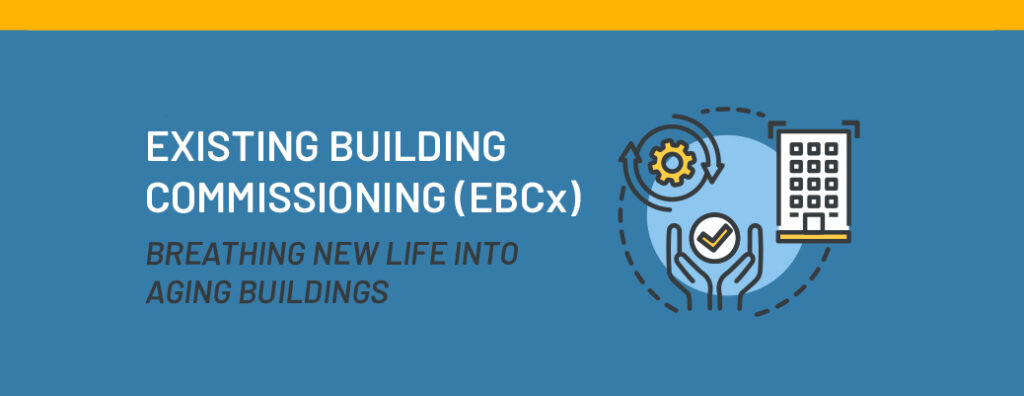
Every organization, in one form or another, is on a quest for continuous improvement. Organizations are being challenged to do more with less. Resources are finite and the ability to sustain operational excellence as costs continue to rise is a constant struggle.
Choosing not to embark on some form of improvement journey guarantees, in the long run, an organization’s decline when compared to their competitors that are developing an improvement culture. Commercial building operators know this challenge all too well. Providing a modern physical space, fit for its intended purpose, with the latest technological enhancements, at an acceptable cost to the client is a challenge. Add the uncertainty of a global pandemic and its impact on space utilization and future building revenues and it only becomes more demanding.
What actions can a building operator take to reduce energy costs, mitigate unplanned maintenance efforts (and their associated costs), and potentially address some compliance issues? Is it possible to mitigate all three in some form or fashion with a single undertaking? If so, it would be foolish to not consider that approach. While it may sound too good to be true, it just so happens that there is a strategy to potentially address, at least to a degree, all three. It is called Existing Building Commissioning (EBCx).
Energy is usually one of the largest costs in an operational budget. An efficiently designed, constructed, and functional facility eventually needs some attention. The reasons start shortly after occupancy:
- Organizational needs change with the organization’s mission
- Physical space may get reallocated to a different purpose, changing ventilation air requirements and space heat loads
- Building occupancy may increase with organization growth, or it may shrink with the implementation of a work-from-home initiative
- Building hours may change, affecting equipment runtime
- Equipment ages, becoming less efficient or failing altogether, potentially causing compliance issues
These changes all involve operational dollars being spent, sometimes unnecessarily, but the overall impact does not stop there. Comfort and indoor environmental issues drive occupant complaints which drive more unplanned maintenance focus. More reactive maintenance activities affect the execution of preventative maintenance requirements, potentially affecting other systems or buildings as the cycle grows.
The EBCx Process
EBCx is a systematic process that can be used to breathe new life into an aging building. The EBCx process is simple. You begin by finding a partner experienced in EBCx to help you through the process. This partner is an expert in helping find, prioritize, and correct HVAC, plumbing, and electrical issues in existing buildings. They will become a trusted advisor as you move through the planning, investigating, implementation, and turnover phases.
Planning involves confirming that a building is a good candidate for EBCx activities, defining the Current Facility Requirements, or CFR, developing an EBCx plan, and defining the project objectives.
Investigating involves reviewing building documentation, establishing an energy baseline, conducting walkthroughs, staff and occupant interviews, testing of systems, estimating energy and operational savings, developing an EBCx plan, and developing a master list of findings to implement for improvement. Recommendations usually fall into three categories: energy conservation measures (ECMs), facility improvement measures (FIMs), or capital improvements.
ECMs are typically oriented towards improving energy-efficient operations to reduce energy costs, which provide a return on your investment. FIMs are geared toward operational performance to improve indoor environmental quality, such as temperature and humidity control, and achieving ventilation requirements. Both ECMs and FIMs are typically low-cost/no-cost opportunities for operational improvements. Capital improvements require a greater financial investment, such as replacing an outdated pneumatic control system with a direct digital control system, so they may be deferred and not included in the EBCx project.
The implementation phase activities include completing any needed redesign, performing the repair and replacement activities necessary to implement the owner accepted ECMs and FIMs, and verifying that the improvements function as intended and provide the planned energy savings and environmental control.
The turnover phase brings the EBCx project toward completion with the training of the O&M staff, along with updating the CFR document and existing facility documentation. Successful EBCx projects setup ongoing improvements so that the process can be started all over again in another facility.
Most EBCx projects can be performed with minimal disruption to the building use and occupants. Properly scoped, an EBCx project can be planned and delivered in a relatively short time frame, allowing for environmental improvements, operational efficiencies, and monetary savings to be realized quickly. MBP’s Facility Performance team members are experts at providing EBCx services and would be glad to assist in understanding the EBCx process better and how it can be used to help improve your facilities and bottom line. We’re here to help.
Stay healthy, safe, and comfortable.
Download a copy of this blog here.




